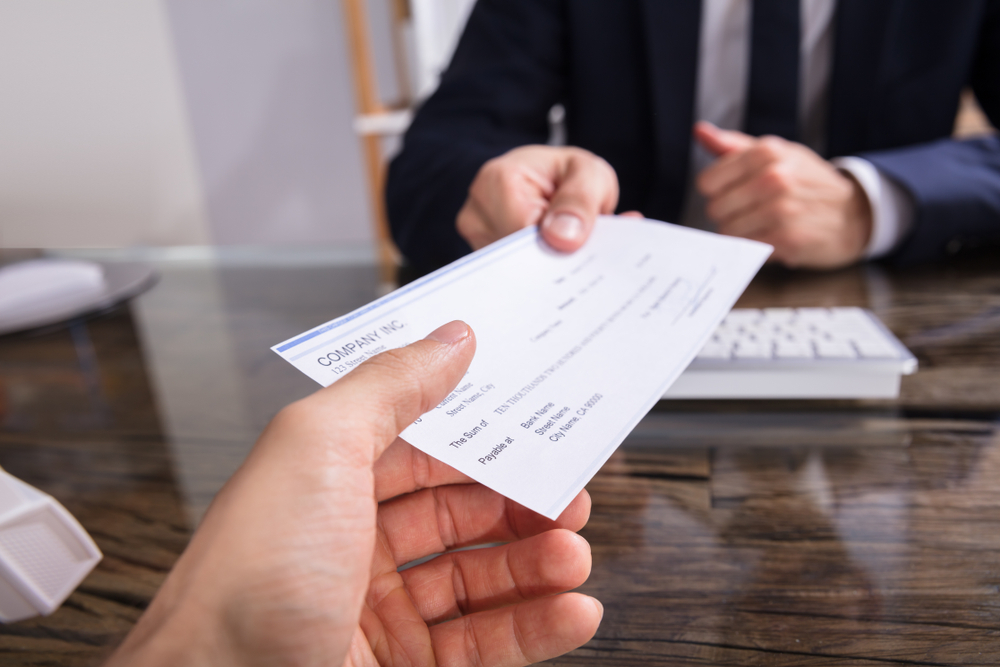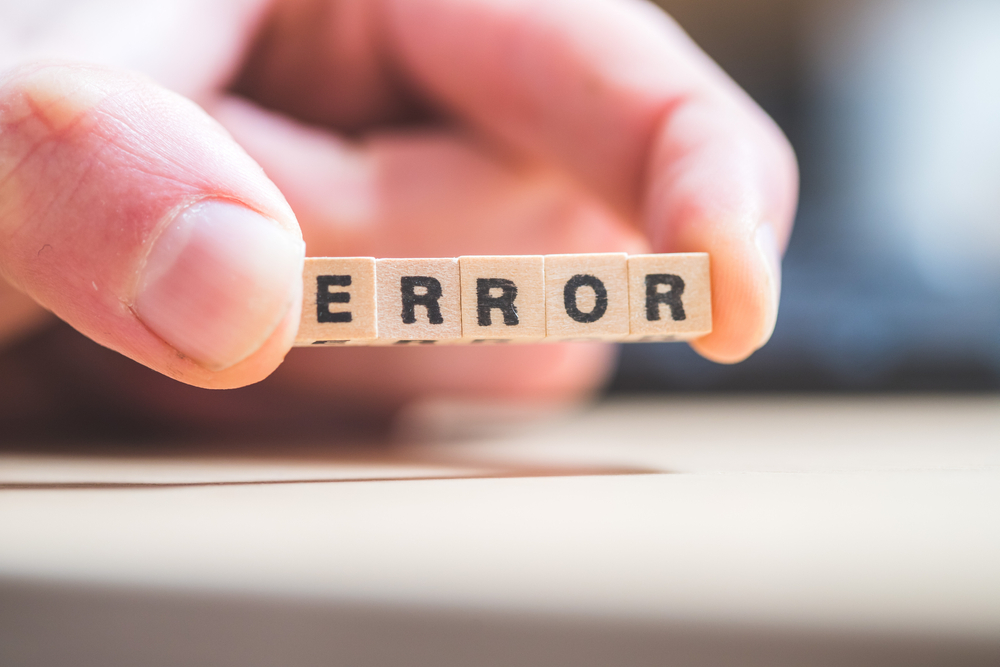With payment systems trending towards electronic methods, check processing is and will be the foundation for successful accounts receivable processes. According to a Mastercard Business Report, 40 percent of business-to-business payments are made via check.
Customers are consistently looking for new convenient payment methods provided by merchants to make the transaction process seamless. Checks are one of those convenient payment methods that customers still use. Check processing systems allow your business to accept these payments with ease.

What Is A Check Processing System?
A check processing system helps to process checks by withdrawing the money from the customer’s bank account using a written order. When a check is written, the customer is authorizing a specific amount of money to be withdrawn from their bank account and given to a merchant.
Check processing refers to the process of steps taken when a check is written, money is verified, moved, and then approved from both ends.
How Are Checks Processed?
Processing checks look different today than they did even a few years ago. Today’s check processing systems allow you to capture electronic copies of check images for verification, processing, and deposit. This cuts down trips to the bank, reduces risks, and makes deposits available sooner.
Echeck processing allows you to authorize check payments in real-time, just like credit card purchases. The merchant will know right away if the customer has an active account and available funds for the purchase.
What Are The Major Kinds Of Check Processing?

ACH and eCheck payment processing combine today’s security of real-time authorizations with the familiarity of paper checks.
There are three main ways that checks are processed, including:
- Traditional Paper Checks: Check processing systems allow businesses to process checks at their POS system. Checks are converted electronically with a check reader or image capture to collect the account information of the customer. Deposits are verified and deposited by ACH and usually clear within 3 business days.
- Electronic: Almost all checks received today are collected as e-checks or electronic check images that are cleared within a day.
- Electronic Funds Transfer: To streamline operations, billers often convert paper checks to an EFT from your checking account. The most common EFT type is an ACH transfer. For example, a store clerk can scan a check to get an image and capture your account information and then void the physical check.
How To Handle Check Processing Errors

Check processing errors and fraud aren’t uncommon; however, it’s still essential to make it a regular practice to review all your bank statements and ensure they are free of inaccurate information.
Depending on the processing of the check, there are specific procedures for handling check processing errors, including:
- Traditional Processed Paper Checks: Each state has its own rules about when and how you can file a claim on errors with traditionally processed checks or checks suspected of fraud. Your local bank will know all these requirements.
- Electronically Processed Substitute Checks: If your bank provides a substitute check that has a possible error or unauthorized transaction, you may be able to get an expedited recredit.
To qualify for this, you contact your bank within 40 days of the date your bank sent the substitute check or the date with the error on your statement. You must submit your claim in writing to your bank.
- Electronic Funds Transfer Processed Payments: Get in touch with your bank within 60 days of receiving a statement that shows an error. The bank needs to investigate within 10 days of being notified. This rule applies to paper checks converted to ACH, ATM withdrawals, debit card purchases, and electronic transactions made with a debit card number or checking account data.
Do You Need A Check Processing System For Your Business?
Whether you need a check processing system for your business or not depends on your specific needs. Every business is different, and to some companies, checks are a necessity, while others only see an occasional check.
Businesses that may need check processing systems for their business may include anyone that accepts monthly or recurring payments, such as gyms, insurance companies, small businesses, and more.
The Benefits Of Accepting Checks For Your Business
Businesses can benefit from accepting checks in several ways. According to the Federal Reserve, e-check payments have risen in recent years. This trend is true for businesses in all industries, and companies that don’t accept checks will find themselves turning away business.
In addition to increasing revenue, accepting checks also allows you to work with the largest amount of customers. They can also help you save money. Checks are less expensive to process than credit card payments.
Working with a check processing system can also help your business to operate more efficiently
by streamlining the process and making it faster.
Risks Of Accepting Checks
Although accepting checks can be very beneficial, there are also risks. Even an e-check can bounce, and it’s important to learn how to avoid bad checks.
Bad checks are considered bad for several reasons, including:
- Insufficient funds to pay for the transaction
- Frozen accounts
- Fake checks
Here are some precautions you can take while accepting checks to avoid fraud and bad checks.
- Ensure All Information Is There
Ensure that the customer has filled out all the necessary information on the check, including name and address, merchant name, the amount being paid, bank information, bank routing number, check number, date, customer’s account number, and customer’s signature.
2. Pay Attention To Security Features
Similar to cash, checks have security features to help differentiate between a fake and a real check.
A real check has these features:
- Check stock paper
- Perforated edges
- Smudge-free ink
- Watermarks
- Unique font for routing, account, and check numbers
- The words “Original Document” on the back
3. Ask For ID
To ensure the check is real, ask the customer for ID. Compare the information on the ID to the check, such as signature, name, and address.
4. Collect Contact Information
It’s a good idea to get customers’ contact information no matter how much they pay so you can contact them if you have a problem with their form of payment.
5. Check Signatures and Date
Require the customer to sign the check in front of you. A pre-signed check could be stolen on fraud. You can also require them to date the check with the current date.
6. Limit Checks To Local Banks If Possible
According to the FTC, you can also limit bounced or fraudulent checks by accepting them from banks that have local branches where you can go in person and verify the check.
7. Check Verification
If you are worried about accepting checks, consider using a check verification service. You can use this verification system to avoid accepting fake checks or bounced checks.
A check verification service can also tell you if the customer has a history of bouncing checks, if the account is in good standing and more.
Not all bad checks are avoidable, but if you accept a bad check, there are a few things you can do to try and get the funds from the customer, including:
- Asking the bank to do an enforced collection
- Contacting the customer to ask for payment
- Hiring a collection agency
- Go to small claims court.
If collecting the funds from a bad check isn’t possible, you must:
- Write the amount off as bad debt in your books
- Claim the bad debt on your tax return
- Make a note in your system to avoid accepting any checks from that customer in the future
- Alert authorities
Final Thoughts
Overall, the more payment options you have available, the more potential revenue you create.
Checks can help you to accept more payments, work with a wider variety of customers, and save money and time.
Although check processing systems aren’t necessary for every type of business, there are many businesses that can benefit from checks, such as rental companies, gyms, recurring subscriptions, and more.
Emerchantbroker provides a check processing system to streamline your payments and provide convenience to your customers. They allow you to accept checks by phone, on the web, in person, and more. They also offer a five-step process to prevent fraud with checks and protect you if a check bounces.
Check out Emerchantbroker today to start accepting checks and save your business time, money, and effort.


